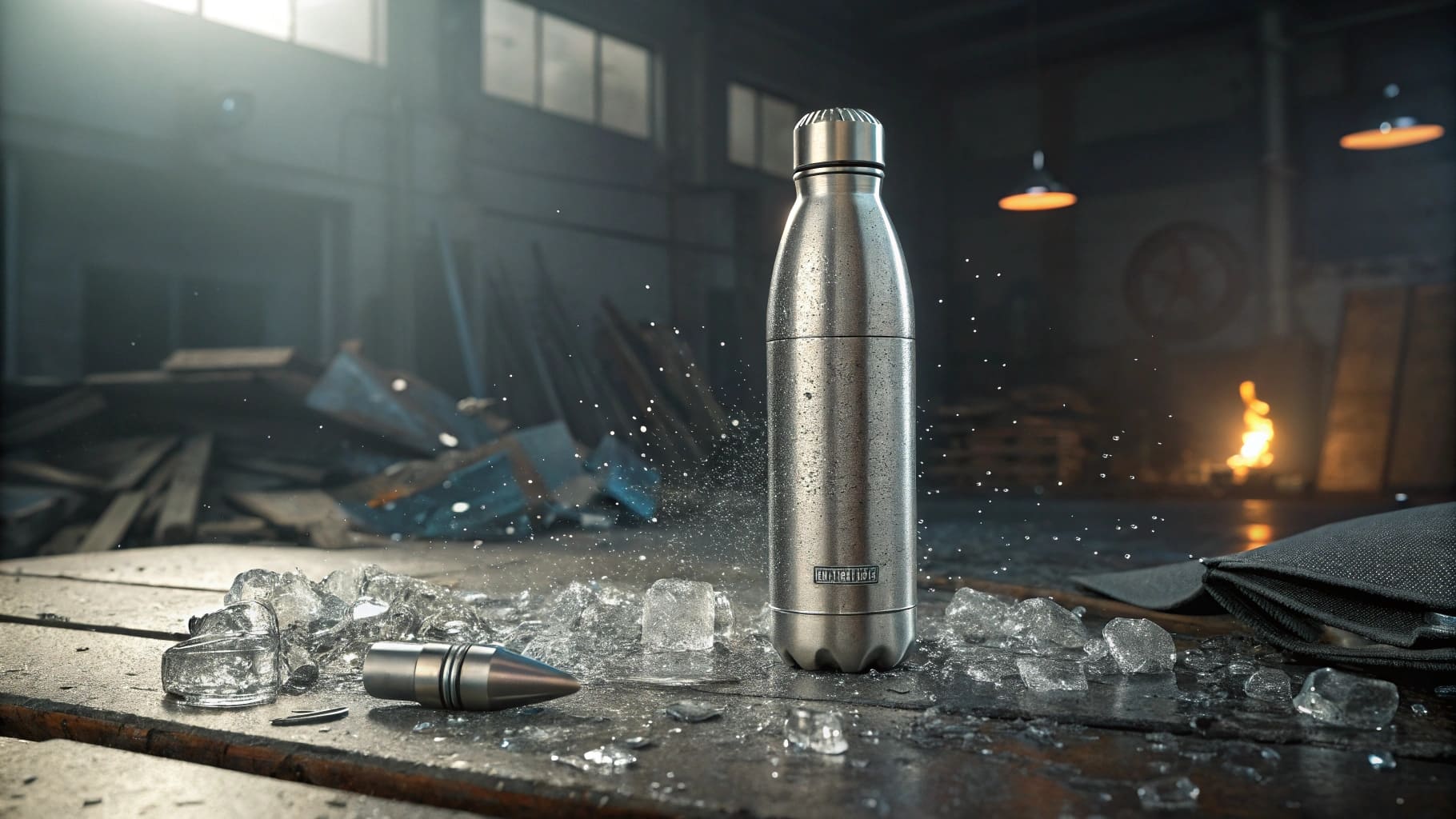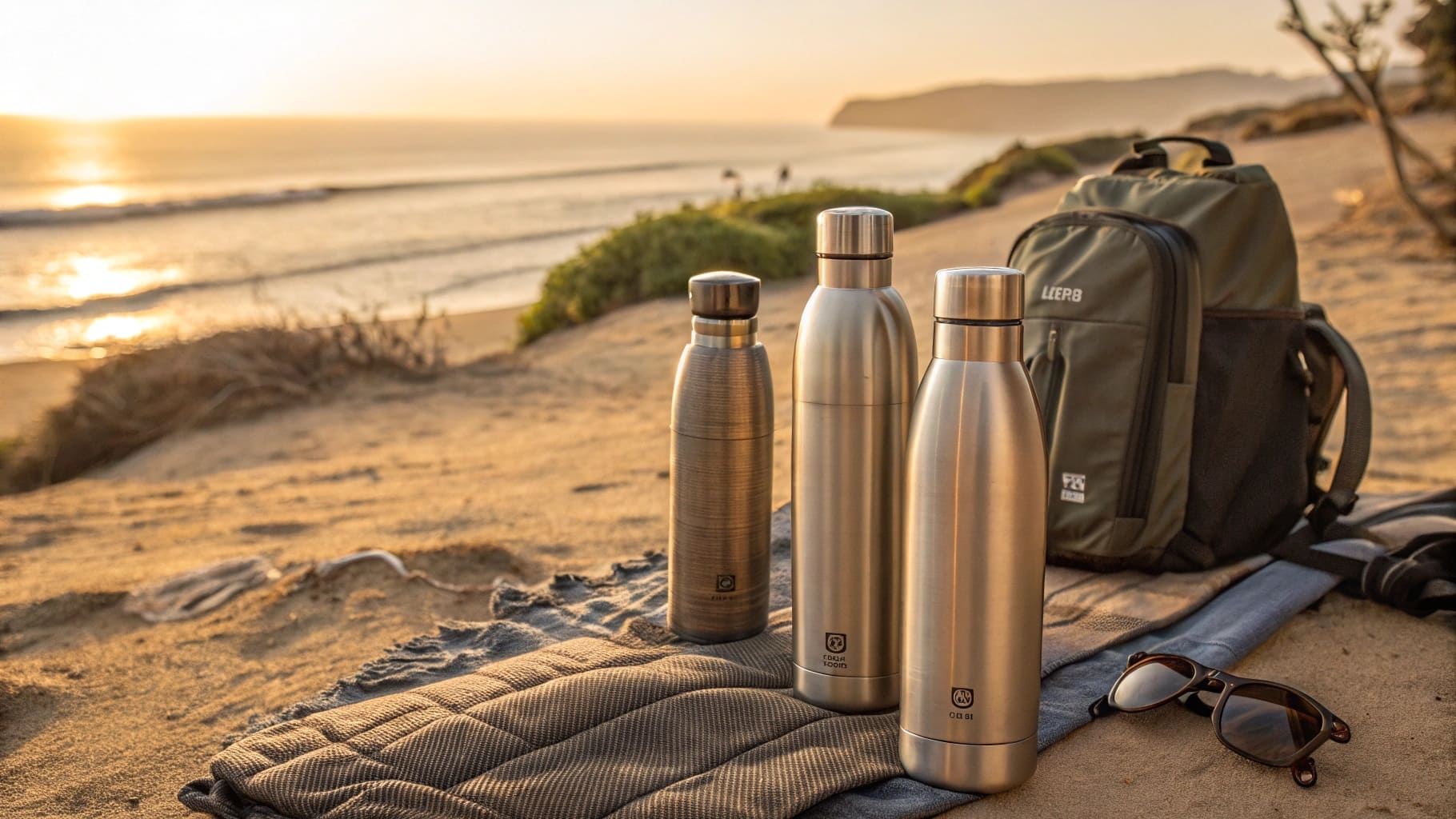Is your favorite Purist bottle starting to smell a bit off? Don't let a dirty bottle ruin your hydration or your drink's taste. Keeping it clean is simple.
The best way to clean your Purist stainless steel bottle is by handwashing it regularly with warm, soapy water. This method ensures it stays hygienic and preserves its quality for a long time.

Keeping your stainless steel bottle clean is really important. It's not just about taste; it's about hygiene too. As someone who supplies these bottles to businesses, I know that end-user satisfaction is key. A bottle that's easy to clean and stays fresh reflects well on the brand. So, let's talk about how to make sure your bottle stays in top shape. You want your customers to love the products you provide, and a clean, long-lasting bottle is a big part of that.
What's the best way to clean a stainless steel water bottle?
Tired of a lingering coffee smell in your water bottle? This can make even fresh water taste bad. Luckily, there's an easy fix for this common problem.
The best way is regular handwashing with warm water and mild dish soap. For a deeper clean, use a bottle brush to scrub the inside. Rinse thoroughly.

When we talk about the "best way" to clean, it's more than just getting rid of today's coffee residue. For us in the B2B world, like when I provide bottles to procurement officers at large companies, it's about ensuring the product maintains its quality over time. This directly impacts end-user satisfaction and, ultimately, the reputation of the brand that sold or distributed the bottle. A bottle that’s simple to clean and stays hygienic is a silent ambassador for quality.
I remember a client, Mark, who was considering a large order of custom-branded bottles for his company. He mentioned his employees often complained about previous branded bottles developing strange odors. He was worried this reflected poorly on the company's commitment to employee well-being. This really highlighted for me how crucial clear cleaning instructions are.
Here are some effective methods:
Regular Cleaning: The Daily Ritual
- Soap and Water: This is your go-to method.
- Empty the bottle.
- Add a few drops of mild dish soap and some warm water.
- Close the lid and shake well for about a minute.
- If you have a bottle brush, use it to scrub the interior walls and the bottom. This is especially important for removing any stubborn residue.
- Don't forget the lid! Clean the threads and any crevices in the cap.
- Rinse thoroughly with warm water until no soap suds remain.
- Air dry upside down, preferably on a drying rack, with the lid off.
Deep Cleaning: For Stubborn Smells or Stains
Sometimes, a simple wash isn't enough. Here are a couple of deep cleaning tricks:
- Vinegar Power:
- Fill the bottle halfway with white vinegar.
- Fill the rest with water.
- Let it sit overnight.
- Rinse very thoroughly in the morning to remove all vinegar traces.
- Baking Soda Blast:
- Put one or two teaspoons of baking soda into the bottle.
- Fill with warm water.
- Shake well, then let it sit for a few hours or overnight.
- Use a bottle brush to scrub if needed.
- Rinse thoroughly.
For B2B buyers, understanding these cleaning methods helps you advise your customers. This ensures the stainless steel bottles you supply, whether they are for a corporate giveaway or retail, maintain their premium feel and function. Clear care instructions can significantly reduce complaints and enhance the perceived value of the product.
Can you put a Purist water bottle in the dishwasher?
Worried about damaging your Purist bottle's finish or seal in the dishwasher? It's a valid concern for a premium product. You want convenience without compromise.
While many stainless steel bodies are dishwasher safe (top rack), handwashing is often gentler for Purist bottles, especially for caps and preserving any special finishes. Always check manufacturer advice.

The question of dishwasher safe1ty is a common one, and it's something I discuss often with clients like Mark, who are business owners looking to distribute these bottles. He wants to offer products that are convenient for his customers in Canada, but not at the expense of quality or durability. From a B2B perspective, this balance is critical. We supply the bottles, but the end-user experience determines repeat business and brand loyalty for our clients.
I once provided a batch of beautifully customized mugs to a startup. A few months later, their boss called, a bit disappointed. The vibrant logo on some mugs had started to fade. It turned out some of his team members were regularly using the high-heat cycle on their dishwashers. This was a learning moment for me – always over-communicate care instructions, especially concerning dishwashers.
So, can your specific Purist bottle go in the dishwasher?
Understanding Dishwasher Effects
- The Stainless Steel Body: Generally, the main body of a high-quality stainless steel bottle (like those made from food-grade 304 or 316 steel) can withstand dishwasher temperatures. If you choose to use a dishwasher, always place it on the top rack.
- Potential Issues:
- Exterior Finish: If your bottle has a special powder coating, paint, or printed design, harsh dishwasher detergents and high heat can cause it to fade, chip, or peel over time. I always tell my clients that if their custom logo is a key feature, handwashing2 is the safest bet to preserve it.
- Cap and Seals: Lids, especially those with complex mechanisms, silicone seals, or different materials, might not fare as well. High heat can warp plastic components or degrade silicone seals, potentially leading to leaks.
- Vacuum Seal: Though rare, extremely high temperatures over very prolonged periods could theoretically affect the vacuum insulation in some double-walled bottles. Most quality bottles are built to resist this, but it's a point of caution.
The B2B Implication
For B2B importers and brands like mine, Icobottle, it’s vital to get clear guidance from the manufacturer. We then need to pass this information accurately to our clients. If a bottle is "dishwasher safe," what are the conditions? Top rack only? Low heat cycle? Are there exceptions for certain finishes or cap types? Providing this detailed information helps our clients manage expectations and advise their end-users correctly. It reduces complaints and ensures the product lives up to its promise. For startup bosses or procurement officers, this means happier employees or customers and a better reflection on their brand.
My advice is usually to err on the side of caution. Handwashing is gentle, effective, and extends the pristine look and function of the bottle. If dishwasher use is a must, clarify the specifics first.
Are purist bottles BPA free?
Concerned about harmful chemicals in your drinkware? It's a major health worry for many. You need assurance that your bottle is safe for daily use.
Yes, reputable stainless steel water bottles, including those like Purist aiming for high quality, are overwhelmingly BPA-free. This is a fundamental expectation for health-conscious products.

When it comes to materials, especially for products that come into contact with food and beverages, "BPA-free" is not just a buzzword; it's a fundamental requirement. As someone in the business of supplying stainless steel drinkware to clients in America and Europe, I can tell you this is often one of the first assurances they seek. It's a non-negotiable.
I remember early in my career with Icobottle, I was at a trade show. A very assertive procurement officer, much like Mark in his decisiveness, spent nearly an hour questioning me about our material sourcing, safety certifications, and specifically, BPA. He explained that his company had faced issues with a previous supplier regarding material claims, and he was now extra cautious. That conversation solidified for me how critical transparency and verified safety are. It’s not just about making a sale; it’s about building trust and ensuring the health and safety of the end-users.
Why BPA-Free Matters
- What is BPA? Bisphenol A (BPA) is an industrial chemical that has been used to make certain plastics and resins since the 1960s. It's found in polycarbonate plastics (often used for clear, hard plastic items) and epoxy resins (which can be used to coat the inside of some metal products, like food cans).
- Health Concerns: Research has shown that BPA can seep into food or beverages from containers made with BPA. Exposure to BPA is a concern because of possible health effects on the brain and prostate gland of fetuses, infants, and children. It might also affect children's behavior. Some research also suggests a possible link between BPA and increased blood pressure, type 2 diabetes, and cardiovascular disease.
- Stainless Steel Advantage: High-quality stainless steel (like food-grade 304 or 18/8) is naturally BPA-free. It doesn't require a plastic liner that might contain BPA. This is one of the key advantages of using stainless steel for drinkware.
B2B Assurance and Compliance
For B2B buyers, particularly procurement officers from large companies or startup bosses building their brand, ensuring products are BPA-free is vital for several reasons:
- Consumer Demand: End-users are increasingly health-conscious and actively seek out BPA-free products.
- Regulatory Compliance: Many countries, especially in North America and Europe, have strict regulations regarding BPA in food contact materials.
- Brand Reputation: Associating your brand with safe, healthy products builds trust and credibility. Offering anything less can be damaging.
When I work with clients, I make sure to provide documentation and clear statements about the materials used. This isn't just a selling point; it's a responsibility. Any reputable manufacturer or supplier of stainless steel water bottles should be able to confirm their products are BPA-free. If they can't, that's a big red flag. For "Purist" bottles, or any brand aiming for a premium, health-conscious image, being BPA-free is an absolute must.
Conclusion
Proper cleaning, understanding dishwasher use, and ensuring BPA-free materials are key. This keeps your Purist stainless steel bottle safe, hygienic, and long-lasting for everyone's satisfaction.

